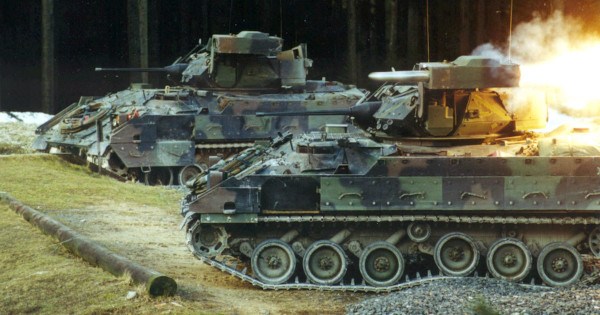

After two decades of failed attempts to do away with the Bradley Fighting Vehicle, the Army is taking one more stab at replacing its aging fleet of combat vehicles.
The service on Friday issued a draft request for proposals (RFP) to industry for the preliminary design phase of the newly-relaunched Optionally Manned Fighting Vehicle (OMFV) program competition.
Following an initial 40-day feedback period, the final RFP will award up to five prototype design contracts by June 2021 ahead of the next phase of the competition, according to Defense News.
This is the Army’s second attempt at an OMFV competition. The service cancelled its initial solicitation in January in order to “revisit the requirements, acquisition strategy and schedule” prior to prototyping.
The cancellation was reportedly prompted by the fact that the service only received one bid, from General Dynamics Land Systems, for the OMFV prototyping competition, as Army leaders told Defense News at the time.

As Task & Purpose previously reported, the OMFV — part of Army Futures Command’s Next-Generation Combat Vehicle (NGCV) program — is just the latest attempt to replace the Bradley that has spanned nearly two decades.
In 1999, the Army adopted the Future Combat Systems (FSC) Manned Ground Vehicles (MGV) program was initiated as part of a broad effort to make the service’s legacy forces “lighter, more modular, and — most importantly — more deployable,” as the Army put it at the time.
That program was cancelled a decade later in 2009 and immediately replaced with the Ground Combat Vehicle program in 2010, which sought to replace the Bradley with the a Ground Combat Infantry Fighting Vehicle before being cancelled in 2014 amid rising costs and expanding requirements.
The Army will likely end up spending upwards of $1.57 billion just on developing OMFV prototypes over the next several years, according to an assessment from the Government Accountability Office.
The GAO initially reported that the Army expected to procure 14 prototype vehicles apiece from two separate defense contractors, but it’s unclear how those totals might change given the multiple design contracts stipulated in the RFP.
Given that the OMFV program was effectively cancelled earlier this year, does this make this the second third attempt at a Bradley replacement or the fourth attempt? I’m having trouble keeping track.
